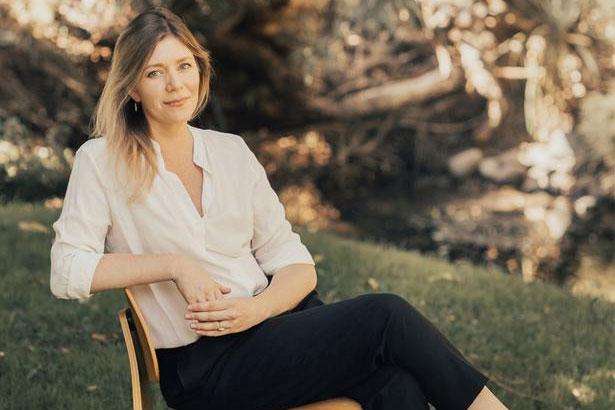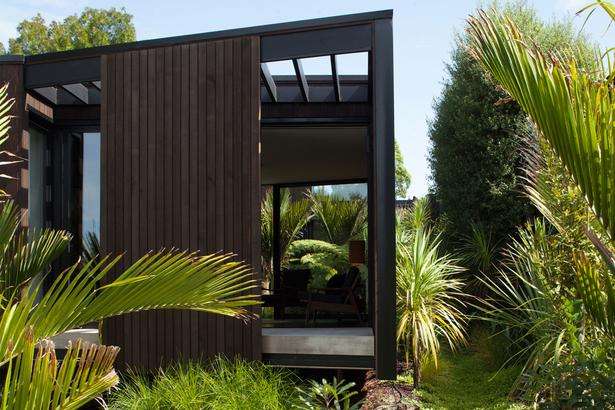Melinda Williams looks at the principles behind the next generation of stylish, sustainable homes, as outlined in her book Eco Home. (This article was originally published by Viva.co.nz.)
In 2006, working as an editor for the New Zealand architecture and design magazine Urbis, I led the first “green” issue, devoted entirely to eco-friendly design. The cover featured a glamorous model wearing sustainable fashion, posed outside an equally glamorous eco-friendly home, along with the encouraging cover-line “It’s Easy Being Green”.
The truth is, just 12 years ago, it wasn’t all that easy to put that issue together. Although sustainable architecture and design was an important conversation within the industry, in the built world, magazine-worthy examples of either were still relatively difficult to find, both in New Zealand and overseas. “Green-washing” — of product that was marketed as being eco-friendly despite having a marginal authentic claim to the territory — was rife, and some of the items that made it on to the pages of that issue probably wouldn’t make the cut today.
The Green Building Council had just been established, and was only the sixth green building council in the world, making New Zealand a comparatively progressive place to be. But to find an unpublished new home that was stylish enough to work on the cover of the magazine, we ended up looking overseas.
Start your property search
Today, local sustainable architecture and design have entered the mainstream. Although there are still some gaps (particularly in the construction sector), many leading architects and designers incorporate sustainability thinking into their work without feeling the need to market themselves as “sustainable designers” — it’s just the new benchmark for how things are done.
Consumers are now far more informed and demanding when it comes to the environmental credentials of their homes, and the furniture, objects, appliances, materials and finishes within them. But that’s not always easy, with product labelling and supply chain transparency often unclear, and product suppliers often focused on selling a singular product without consideration of how it will work in a complex system like a house. That needs a holistic approach, based on simple sustainability principles, like the six following.

Eco Home author and Viva design editor Melinda Williams. Photo / Anna Kidman
1. Respect the site and its community
Nature can’t be compartmentalised; what we do on our own piece of land affects the wider ecosystem, so any true eco-home must preserve, accommodate and nurture the landscape it is a part of. This means paying close attention to the flora and fauna native to a site and its surroundings, the climate, the geographic characteristics of the area, including water flows, and the human community around it.
The Department of Conservation reports that almost a third of New Zealand’s indigenous birds have been exterminated by humans and introduced pests. More than 63 per cent of our original forest has been converted to farmland, urban land and roads, destroying and shrinking the habitats of thousands of species. Many of our surviving creatures have been driven to the edge of extinction.
These creatures exist at the most visible end of a phenomenally complex ecosystem of vertebrates, invertebrates, plants, soil, water, fungi and bacteria, which works as a whole to support life in New Zealand. Every one of us, from farmers to city dwellers, plays a part in preserving this irreplaceable natural habitat, which underpins billions of dollars of annual GDP, not to mention the sense of shared national identity and culture we gain from it.
2. Use renewable natural resources efficiently
Sustainable home design makes optimal use of resources that are free and endlessly renewable — such as light and heat from the sun, wind for ventilation and power, and rainwater harvesting. By building in a way that draws first on natural heat, light, air and water movement and rainfall, we reduce — or in some cases eliminate — our need for energy derived from fossil fuels, our load on the national power and water grids, and our use of refrigerants for cooling air, while at the same time lightening the load on our wallets.
This is achieved through starting with good “passive design”, or orienting the home on the site to let the sunshine in when the house needs warming, using eaves or other shading devices to protect the areas of the house that are at risk of overheating when the sun is at its strongest, and planning room layouts to work well with the passage of the sun through the day. Good insulation is also important to keep the heat inside once it has been gained.
3. Choose low-impact materials
Buildings are complex systems that need to perform and please in many different ways, so when it comes to materials, there are few absolute right or wrong choices. Sustainably harvested local timber may, at a basic level, be a “greener” material than concrete, but a concrete floor performs far better than a wooden one as a form of thermal mass to store free heat from the sun. A concrete floor may be a superior form of thermal mass for your home, but if you hate the look and feel of it, you won’t enjoy living in your home.
What you want from a material is that it is, firstly, fit for its purpose; secondly that it ticks as many boxes as possible for being non-toxic, sustainably sourced, and recyclable or biodegradable at the end of its (ideally long) life; and thirdly, that it’s aesthetically pleasing to you. Life Cycle Assessment is a way of looking at materials from “cradle to grave”, by evaluating how they’re made and transported, used, recycled and disposed of, with the aim of making more informed choices about their environmental friendliness.
4. Move from waste to regeneration
You’ve probably heard the mantra “Reduce, Reuse, Recycle”. What you may not realise is that the saying works in order of importance. When it comes to minimising environmental impact, the best thing you can do is first reduce the amount you buy, then reuse what you already have (perhaps in a different way to its first use), and finally recycle anything that has come to the end of its life.
Recycling, while an essential part of sustainable living, is not a full solution as it currently exists.
Most modern recycling is actually “down-cycling”, not true recycling, where a material can be endlessly returned to its original form. When you throw a plastic milk bottle into the recycling bin, it’s unlikely to have another life as a milk bottle, because it’s difficult and expensive to return recycled plastic to a food-grade quality, especially after it has been recycled more than once. Instead — after being crushed and bound into bales, and shipped to an overseas recycling plant, accumulating carbon kilometres as it goes — it may end up as carpet underlay, polyester fabric, shoe soles, kids’ toys or a road cone. At the end of that use, it may well end up in a landfill after all.
Ultimately, as architect William McDonough and chemist Michael Braungart wrote in their revolutionary book Cradle to Cradle: Remaking the Way We Make Things, the future is in looking to nature to learn how to redesign our systems to make them endlessly abundant. In the same way that the waste from our tables can be turned into compost to fertilise our vegetable gardens to grow more food for our tables, the future of man-made materials is in learning how to improve their recyclability to the point where they can be re-used endlessly.

The future is in looking to nature to learn how to redesign our systems to make them endlessly abundant. Photo / Supplied
5. Design for a lifetime
The longer a building lasts in good condition, the better it is for the environment. When you live in a good, comfortable, healthy house, you’re more likely to stay there for longer, accruing all the benefits of long-term tenure.
Historically, New Zealand homes haven’t been great at serving the needs of people through more than a few years of their lives, and as a whole, our housing stock is increasingly less well-fitted for the needs of our changing and ageing population. By the year 2061, there are expected to be more than 1.4 million older people in New Zealand, with a large swell in the demographic reaching the age of 60 between 2040 and 2060.
So a typical three-to four-bedroom family home is probably not going to be well-suited for older couples and singles, who often want smaller, warmer, lower-maintenance houses, or at least homes where they can close off areas until needed for visiting family or friends. People with disabilities (one in four, according to the Office for Disability Issues) may also have to spend considerable amounts of their own and publicly funded money adapting their homes to accommodate their level of ability. These changes can be as simple as ensuring level or accessible entry and exit points to bathrooms and kitchens — elements that can be easily designed into new homes.
When you’re building a home, it’s tempting to design your own “dream home” — an idiosyncratic tribute to your unique needs, family size and individual tastes. But the reality is that your home is almost certain to pass on to other people in the future, so taking a “lifetime design” approach is more sustainable.
6. Integrate a connection with nature
Since the 1970s, one of the terms most frequently used by real estate agents to advertise a desirable Kiwi home has been “great indoor-outdoor flow”. Our (mostly) temperate climate and affection for the Great Outdoors means that newer homes are often designed with big ranch sliders or bifold doors in the living and bedroom areas to let us open the house up to gardens or patios.
But why stop there? The more that natural textures, colours, materials and elements — particularly ones that are a beautiful reflection of the natural ecology of the local landscape — are brought into our homes, the deeper our sense of connection to nature becomes. The writer John Naisbitt, who studies future trends, predicts that as our lives increasingly use and even depend on digital technology, we will feel an even stronger pull towards human and natural connection to provide a sense of relief or grounding — a balance of “high-tech” and “high touch”.
And in his insightful book The Shape of Green, author Lance Hosey argues that in order for sustainable design to be enduring, it must be pleasing to look at, because we look after what we love, and we love what is beautiful. A home that is aesthetically delightful is one that will be cared for and maintained — an important aspect of building longevity, as many buildings are demolished for no reason other than that it would be more expensive to repair them than to build new, despite the environmental costs associated with new buildings.
• Portions of this article are adapted from Eco Home: Smart Ideas for Sustainable New Zealand Homes by Melinda Williams, published by Penguin Books.
Originally published as 6 Simple Principles To Consider For An Eco-Friendly Home














































































